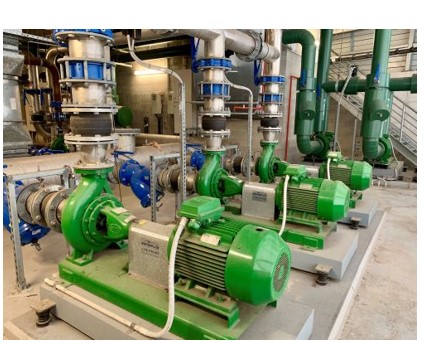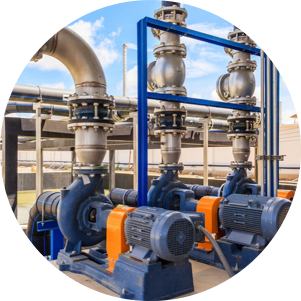The Role of Sealing in Pump Manufacturing

Seals play a multi-faceted role in pump manufacturing by ensuring fluid containment, maintaining internal pressure, providing environmental protection, reducing wear and tear, and assuring safety. They form barriers to prevent leaks, withstand fluctuating pressures for optimal performance, and safeguard against external contaminants that can disrupt system purity and cause mechanical wear. In industries handling hazardous materials, seals are also critical for ensuring safe operations and compliance with regulations, safeguarding both human life and the environment.
Pump systems are the lifeline of various industries, from water treatment and chemical processing to oil and gas exploration. At the core of these systems are essential sealing components like o-rings, backup rings, and other specialized seals.
Challenges in Sealing for Pump Manufacturing
The effectiveness of a pump system largely depends on the quality and suitability of its sealing components. However, choosing the right seal is not straightforward and involves navigating challenges. These challenges range from technical and material considerations to compliance with industry-specific regulations. Here are the major challenges involved:
- Chemical Compatibility:
 Ensuring the seal material is compatible with the chemicals being pumped is crucial. Incompatibility can result in accelerated seal degradation, leading to leaks and potentially catastrophic failures.
Ensuring the seal material is compatible with the chemicals being pumped is crucial. Incompatibility can result in accelerated seal degradation, leading to leaks and potentially catastrophic failures. - Dynamic vs. Static Sealing: Pumps have both rotating and stationary components, requiring different types of seals. Dynamic seals must minimize friction for efficient movement, while static seals must provide a secure, leak-proof barrier.
- Fluctuating Pressure: Many pumping applications experience variable or fluctuating pressures. Seals must be robust enough to accommodate these changes without undergoing deformation or failure.
- Regulatory Compliance: Different industries have specific guidelines and regulations governing the use of seals. Ensuring that seals meet these requirements while also performing effectively and efficiently adds an additional layer of complexity.
Common Seals Used in the Pump Manufacturing Industry
When it comes to pump manufacturing, selecting the right sealing solution is critical for ensuring efficiency, reliability, and safety. The industry uses a variety of seals, each with its unique set of properties and advantages suited to specific pump applications. Below is a table outlining common types of seals, their descriptions, use cases, and typical materials.
|
|
|
|
|
|---|---|---|---|
| O-Rings | Versatile, round-shaped seals used for both static and dynamic applications. | General sealing, pressure control systems, hydraulic and pneumatic pumps. | NBR | FKM | VMQ | EPDM | AFLAS | FFKM | HNBR | CR | FVMQ | PTFE | PU |
| Oil Seals | Designed to seal the opening between rotating and stationary components. Often used for lubricant containment. | Gear pumps, rotary pumps, lubrication systems. | NBR | FKM | VMQ | EPDM | HNBR | PTFE | ACM |
| Backup Rings | Used alongside o-rings to prevent extrusion in high-pressure environments. | High-pressure pumping systems, chemical injection pumps. | NBR | FKM | PTFE |
| V-Rings | All-rubber, dynamic seals often used as secondary seals to protect primary seals. | Cooling systems, submersible pumps, secondary sealing in multistage pumps. | NBR | FKM |
| X-Rings | Also known as quad rings, offer more sealing surfaces than traditional o-rings. | Reciprocating pumps, diaphragm pumps, vacuum pumps. | NBR | FKM | VMQ | EPDM |
Your Trusted Partner in Sealing Solutions
Understanding the critical roles that seals play in pump manufacturing, various challenges, and available options underscores the need for a reliable, knowledgeable supplier. Global O-Ring and Seal is uniquely positioned to address these needs with our comprehensive range of sealing solutions. Contact us today to discuss your sealing needs.

 English
English  Español
Español  Français
Français  Português
Português  Deutsch
Deutsch  Italiano
Italiano  Русский
Русский  中文
中文  日本語
日本語  العربية
العربية  हिन्दी
हिन्दी